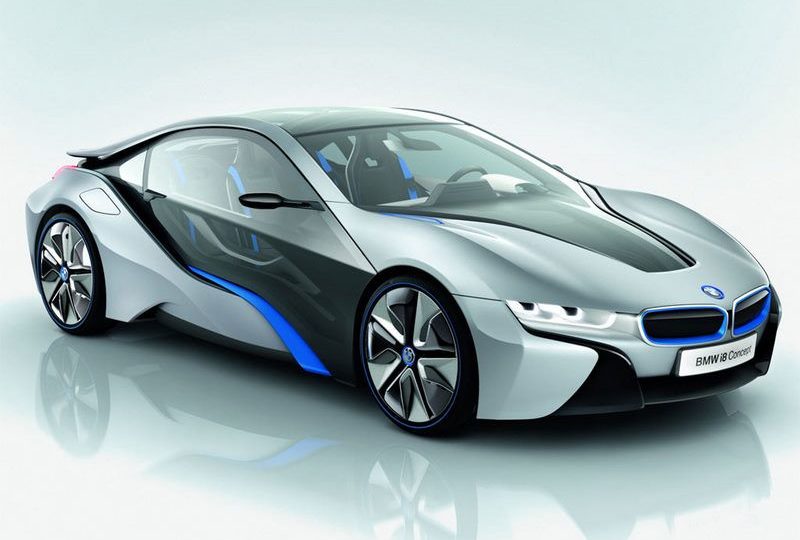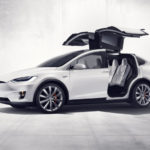Consumers’s priorities has always driven automobile development; In the 1960s, public outcry for increased safety measures led to all vehicles requiring seat belts. The 1973 oil embargo led to many consumers valuing smaller cars rather than ones with horsepower. Even today, consumers continue to shape automobile developments as engineers aim to reduce environmental impact and leverage technology for enhanced convenience.
Below are seven examples of cutting-edge developments that will soon make a strong impact on the market.
Pickup Trucks and Larger Vehicles May Soon Leverage Electric Technology
Ford has made clear its intentions to develop electric and hybrid pickup trucks. Why is this such a big deal? As of today, there are no vehicles with heavy hauling capabilities on the road. By making the F150 (the number one selling vehicle in the US) available in hybrid or electric versions, a new sect of drivers can limit their greenhouse gas emissions.
So the real question is when to expect Ford’s big release. Some industry insiders note that it could be as soon as the release of the 2021 F150, but Ford has made no official statements committing to a timeline.
Tiny Cars Will Become Even More Lightweight
Numerous manufacturers—Volkswagen, Chevrolet, Nissan— are engineering the ultimate lightweight commuter vehicles. Clearly not intended to attract to everyone, every design element caters to maneuvering compact urban environments while near-eliminating any emissions. For example, the Nissan’s PIVO 3 includes doors that slide rather than swing to better accommodate tight parking spaces, and its diminutive 10’ length enables it to U-turn within areas only 13’ wide. A tight three-seater, its operated with electric motors in the wheels and a lithium-ion battery pack.
Plus, did we mention that it’s capable of driving itself, finding its own parking space, and coming if summoned via mobile app? Which leads us to our next point . . .
Driverless, Self-Parking Technology
Self-driving cars have been met with both celebration and skepticism. However, accompanying this capability also comes self-parking benefits, something with which EVERYONE can get onboard. While some vehicles have self-parking capabilities, most require the driver to be seated inside. However, a select few—including certain Teslas, BMWs, and the above-mentioned Nissan PIVO3—eliminate the need for the owner to be present throughout the process.
Just imagine, your car can drop you off at the entrance to the mall before finding its own spot, sparing you the frustrations of circling the crowded parking lot to find a space. When you’re done, heavy bags in tow, all you would have to do would be to “call” your vehicle and it’d “pick you up” from where you’re standing. The self-parking technology is proven to smoothly maneuver tight spaces, coordinate with garage doors, and avoid those “love bumps” every city-driver dreads.
As consumers expect increased levels of convenience, anticipate an increasing number of models to incorporate this technology.
Manufacturers Explore the Strength of Super Magnesium
Super magnesium may turn out to be the super hero of the metals. Noted by the manufacturer Allite, it’s lighter and stiffer than aluminum, cheaper than carbon fiber, and the most environmentally-friendly of all auto material options. Plus, magnesium is accessible in large quantities to further enable its usage on a mass level.
Previously reserved for exclusive use aerospace and select Defense operations, it has the undivided attention of leaders within the biking, outdoor goods, cell phone, and auto manufacturing industries. Though no car brands have openly acknowledged a partnership with Allite, it’s only a matter of time.
Augmented Reality: User Manuals, Dashboards, and More
As mentioned above, consumers clamor for technological features that bring new levels of convenience. From their desire came the integration of augmented reality (AR) into multiple aspects of car operations, such as the user manual. An official upgrade from leafing through a booklet, Genesis drivers need to simply download an app and then point their smart phone at the particular car part in question to access quick answers, how-to videos, and more.
However, engineers further pushed themselves with the introduction of AR dashboard designs. Displayed directly on the windshield, it’d use its understanding of your physical surroundings to visually guide you on when to stop, swerve, etc.
While the augmented reality component would be new, a handful of recent vehicle designs do exhibit the dashboard as a windshield overlay rather than a feature of the center console. The ultimate goal is to keep the drivers’ eyes on the road while simultaneously enhancing the car’s sleek aesthetic.
Augmented reality will even influence the way the design process of the vehicles themselves. Manufacturers such as Ford and Nissan already incorporate AR into their methodology, but Volvo has perhaps found its most creative use; testers wear AR helmets while driving actual cars, overlaying hypothetical upgrades on top of the existing layout. As a result, they’re able to assess potential designs without having to build them, enabling them to only move ahead with the most winning ideas.
For consumers, this new utilization of AR may mean that engineers are able to accelerate their timelines to produce groundbreaking changes in surprisingly little time.
Automatic Emergency Braking Will Soon Come Standardized
Automatic emergency braking (AEB) is currently available to drivers, but it certainly isn’t widespread. However, twenty auto manufacturers that serve 99% of the USA agreed to make this standardized on all vehicles by 2022.
So what is ABE exactly? As the name implies, the vehicle senses when objects are dangerously close and, if the driver fails to take the necessary action, the car automatically brakes. The national adoption of this upgrade may be a watershed moment for automobile safety on par with the significance of the seatbelt.
Vehicle-to-Vehicle Communication
Vehicle-to-vehicle (V2V) communication would enable vehicles to learn from one another while on the road and make decisions accordingly. Is there a bad accident ahead? Using wireless protocols akin to WiFi, V2V would enable your car to discover this in real-time and suggest alternative routes. Even more importantly, your car would be able to anticipate other motorists actions rather than react post-event. For example, if a driver three cars in front of you abruptly brakes, all vehicles would simultaneously respond rather than responding as a chain-reaction with each car receiving delayed knowledge.
You can see the technology in action in Michigan where select Ann Arbor residents and the Department of Transportation pilot the program. Unless deterred by the feedback of the test, the goal is to one day install this potentially life-saving feature in all cars, commercial trucks, buses, and even motorcycles.
The Vehicles of Tomorrow Won’t Resemble the Ones of Yesteryear
The auto industry is in the midst of a renaissance. Just think about it: your 2005 model certainly drove fine, but did it have bluetooth capabilities? A turbocharged engine for gas efficiency? Infotainment? Rearview cameras? 15 years ago, self-driving cars seemed more appropriate in a sci-fi movie than on our streets. This momentum of change will only build with time as technology and consumer needs lead to new possibilities.
— Sara Beuckman, Manager at Bo Beuckman Quality Ford








